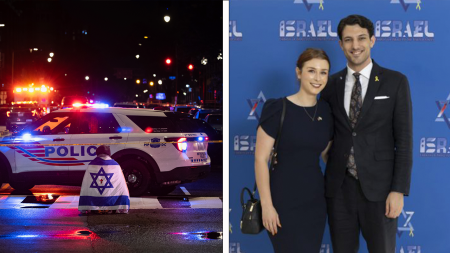The distribution of “The Columbia Intifada,” an antisemitic newspaper, by students at Columbia University has ignited a firestorm of controversy, sparking condemnation from a New York lawmaker and raising concerns about campus safety and free speech. The newspaper, published by an anti-Israel student group, features articles with inflammatory titles such as “Zionist Peace Means Palestinian Blood” and “The Myth of the Two-State Solution.” The anonymity of the authors adds another layer of complexity to the situation, raising questions about accountability and the potential for unchecked dissemination of harmful rhetoric. Congressman Mike Lawler’s strong reaction, calling for the university to lose federal funding and tax-exempt status, and for the deportation of any international students involved, reflects the seriousness with which the publication is being viewed in some circles. His statement highlights the tension between protecting free speech on campus and addressing hate speech that targets specific groups.
The controversy surrounding “The Columbia Intifada” underscores the ongoing debate about the limits of free speech on college campuses. While universities are often seen as bastions of free expression and the exchange of diverse viewpoints, the question of whether this protection extends to speech that promotes hatred or violence remains a contentious one. Lawler’s call for consequences against the university and the students involved reflects a perspective that prioritizes protecting vulnerable groups from harmful rhetoric over absolute freedom of expression. However, others might argue that such actions could create a chilling effect on campus discourse, potentially suppressing legitimate criticism of Israeli policies and stifling open dialogue.
The university’s response, while acknowledging the harmful nature of the publication, stops short of taking concrete action against the students involved. Columbia’s statement emphasizes the university’s commitment to its values of inclusivity and condemns any actions that promote violence or discrimination. However, the statement also mentions an ongoing investigation, suggesting that the university is treading carefully to balance its commitment to free speech with its responsibility to create a safe and welcoming environment for all students. This measured approach reflects the complex challenges universities face in navigating these difficult situations, where the line between protected speech and hate speech can be blurry.
The incident has also exposed divisions within the student body. While some Jewish students expressed fear and concern over the newspaper’s content, viewing it as a direct threat to their safety and well-being on campus, others voiced support for the publication, emphasizing the importance of diverse viewpoints and the right to express even unpopular opinions. This divergence of opinion reflects the broader societal polarization surrounding the Israeli-Palestinian conflict, which often plays out on college campuses across the country. The incident at Columbia highlights the challenge of fostering constructive dialogue and understanding in such a charged environment.
The publication of “The Columbia Intifada” follows a pattern of anti-Israel protests and activities at Columbia University, indicating a deeper underlying tension on campus related to the Israeli-Palestinian conflict. These previous incidents, including the disruption of university events and the cancellation of the university-wide commencement ceremony, suggest a growing climate of hostility and intolerance, requiring the university to address not just this specific incident but the broader environment that allows such expressions of hate to flourish. The university’s ongoing efforts to improve campus safety and address concerns about antisemitism demonstrate a recognition of the need for proactive measures to prevent further escalation of tensions.
The controversy surrounding “The Columbia Intifada” highlights the complex interplay of free speech, hate speech, and campus safety. The incident raises fundamental questions about the limits of free expression, the responsibility of universities to protect vulnerable groups, and the challenges of fostering constructive dialogue in a polarized environment. The university’s response, the reactions from lawmakers and students, and the broader context of ongoing tensions on campus all contribute to a complex and multifaceted debate with no easy answers. The incident serves as a stark reminder of the ongoing need for universities to grapple with these issues and to strive towards creating inclusive and respectful campus environments where all students feel safe and valued.










